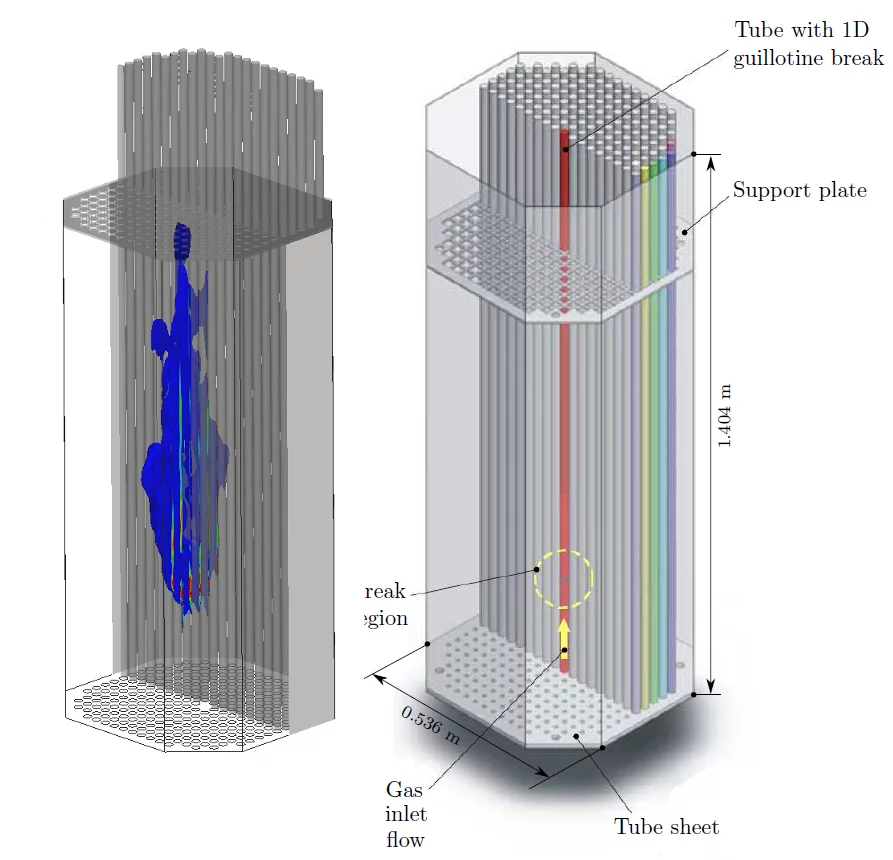Simulation of Particle-Laden flow in the Secondary Side of a Steam Generator Bundle
In Pressurized Water Reactors (PWR), steam generator tube rupture (SGTR) events occasionally occur during operation. A particular safety challenge arises from a tube rupture in combination with other system failures such that a core melt occurs, with production of radioactive aerosol particles that are released into the steam generator (SG) and may potentially find their way to the environment. To experimentally quantify the potential for aerosol removal by the SG tube bundle structures, a model SG facility called Aerosol Trapping In a Steam Generator (ARTIST) was built and operated at PSI. The ARTIST program (2001-2012), which involved twenty international partners, showed that aerosol particles which are injected into a dry SG bundle are principally retained in the region close to breach (the so-called break stage). This region is characterized by highly non-uniform and turbulent flow, with very high velocities near the breach, and low-velocity recirculating flow away from the breach. This work is devoted to understanding the mechanisms governing particle deposition in SG model ARTIST. To simulate the flow and particle dynamics in the SG tube bundle, large scale computational resources of Swiss National Supercomputing Centre are used. To have a better potential for accurate flow and particle dynamics predictions, advanced computational fluid dynamics (CFD) tools are used. In particular, in this project, Detached Eddy (DES) and Large Eddy Simulations (LES) are used in order to tackle the wide range of flow scales present.
Publications
Particle deposition modeling in the secondary side of a steam generator bundle model
R. Mukin, A. Dehbi
Nuclear Engineering and Design 299, 112, 2016
DOI: www.sciencedirect.com/science/article/pii/S0029549315003891


